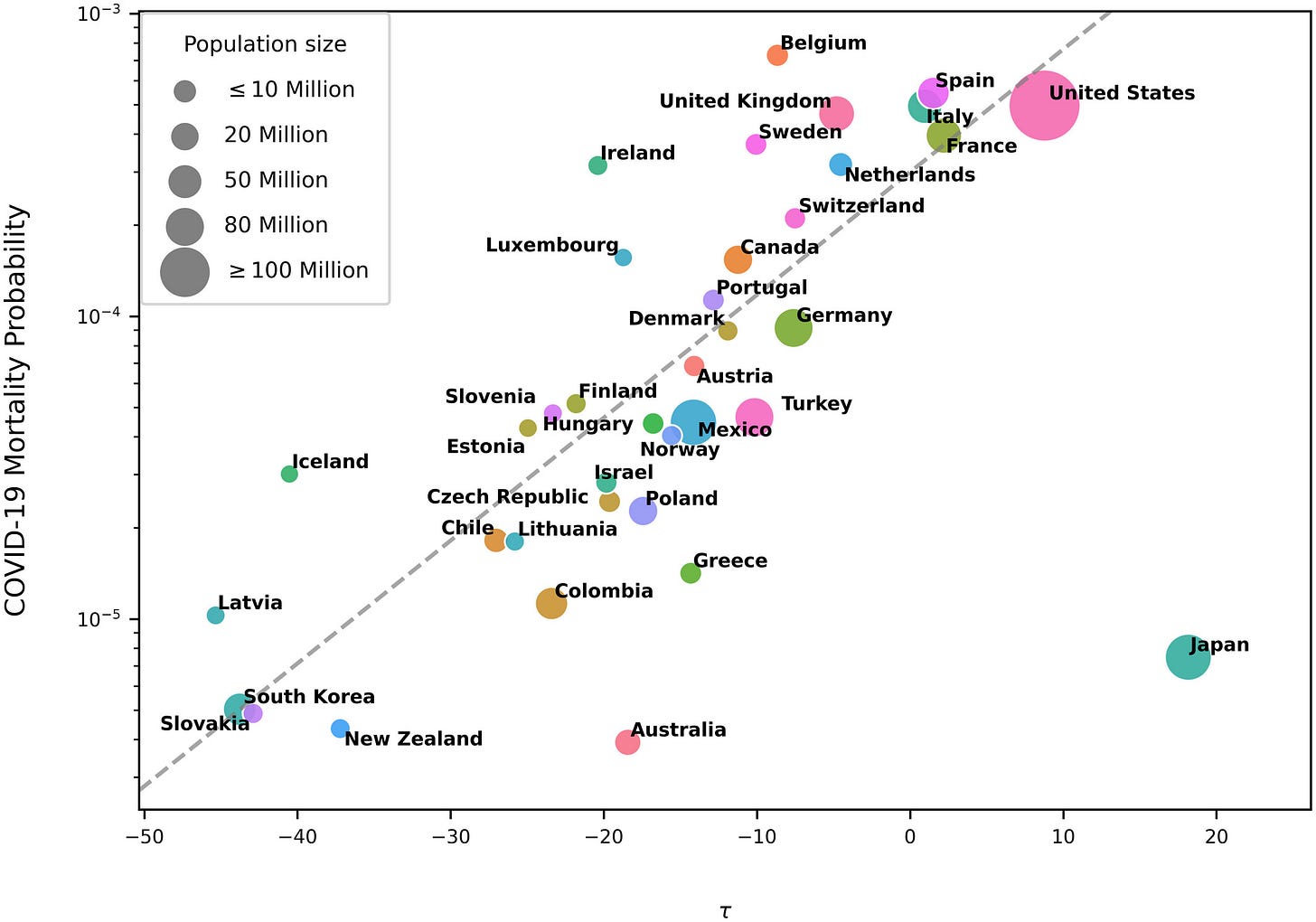After looking at mindo last time, this post will look the 2nd of the 3 Ms: mobility.
In April 2020, modeller Hiroshi Nishiura predicted that up to 850,00 people would need mechanical ventilators and 420,000 of them would die unless people stayed home to reduce their contacts by 80%. But in June 2020 when Japan had reported fewer than 1000 Covid deaths, Finance Minister Taro Aso bragged that one reason was the Japanese were better at following the authorities’ requests to stay home. So did the collectivist Japanese stay home more than the individualistic Britons and Americans in the first few months of the pandemic?
Nope. In fact, the Japanese tended to stay home less than Brits and Americans. But maybe they spent less time doing selfish activities like visiting “non-essential” businesses?
No again. But did they just time it better? After all, Lowenthal et al. found that the earlier people reduced their mobility relative to the day the first 10 Covid deaths had been reported (0 on the horizontal axis), the fewer Covid deaths their country tended to have in the first half of 2020. Their key graph is shown below.
The x-axis represents τ, the difference between the social distancing start time and the day in which the ten first deaths were recorded for the respective country (intuitively, the response time). The y-axis represents the COVID-19 Mortality Probability in a logarithmic scale. Dot sizes are proportional to population sizes. The dashed line corresponds to the fitted regression, excluding Japan.
Did you spot the outlier? So the Japanese not only stayed home less but also were even slower to do so that the Americans .
But despite this data suggesting mobility has been irrelevant to Japan’s low Covid death count, the governments’ experts can’t let go of their obsession with “people flow” (人流).
For example, here’s Shigeru Omi, chair of Japan’s Coronavirus Experts Committee, saying on 12th August 2021 during the height of the Delta wave that the people flow in Tokyo would need to be reduced to 50% that in early July in order to bring infections down. Look at the worry on the news readers faces!
So Tokyo residents with their high mindo surely followed the advice of Japan’s top expert and refrained from leaving the house for retail and recreation (R&R) purposes after August 12th, didn’t they?
I guess you could call Omi Japan’s Fauci.
And the one time a serious expert was asked to analyse the effects of people staying home and non-essential businesses closing, he found…nothing.
And outside of Japan, strict limits on movement, gatherings, and businesses made next to no difference to Covid outcomes.
So if mindo, and mobility aren’t the secret to Japan’s relative success, what about the 3rd M: masks? We’ll look at that next time.









